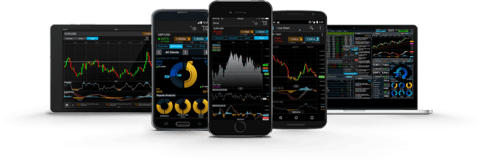Role of Economic Indicators in CFD Trading

In the fast-paced world of trading, Contracts for Difference (CFDs) have emerged as a popular tool among savvy investors. But what sets successful traders apart? A deep understanding of economic indicators often makes the difference. In this post, we’ll explore how you can leverage economic indicators to excel in CFD trading.
What Are Economic Indicators?
Economic indicators are statistical metrics used to gauge the health and direction of an economy. They provide vital clues about economic performance, helping traders make informed decisions. Key indicators include GDP growth, unemployment rates, inflation, and consumer confidence. Understanding these metrics can give traders an edge in predicting market moves.
The Importance of GDP Growth
Gross Domestic Product (GDP) is the most comprehensive measure of a country’s economic activity. It represents the total value of all goods and services produced over a specific period. A rising GDP suggests a growing economy, which can boost investor confidence and drive market prices up. Conversely, a declining GDP can signal economic troubles ahead.
Unemployment Rates and Market Sentiment
Unemployment rates indicate the percentage of the labor force that is jobless and actively seeking employment. High unemployment can signal economic distress, leading to bearish market sentiment. On the other hand, low unemployment typically reflects a robust economy, which can bolster market confidence and drive asset prices higher.
Inflation and Its Impact on Trading
Inflation measures the rate at which the general price level of goods and services rises, eroding purchasing power. Moderate inflation is usually a sign of a healthy economy, but hyperinflation or deflation can signal economic instability. Traders closely monitor inflation data, as it influences central bank policies, interest rates, and ultimately, market movements.
Using Economic Indicators in CFD Trading
Now that we understand the key economic indicators, let’s discuss how to use them in CFD trading. Successful traders analyze these metrics to anticipate market trends and make strategic decisions.
Analyzing GDP Reports
When a country’s GDP report is released, it can cause significant market volatility. Traders analyze these reports to gauge economic health and adjust their trading positions accordingly. For instance, a positive GDP report might lead traders to go long on indices representing that country’s stock market.
Monitoring Unemployment Data
Traders keep a close eye on monthly unemployment reports. An unexpected rise in unemployment can trigger a sell-off in equity markets as investors fear an economic slowdown. Conversely, a drop in unemployment can boost market confidence and lead to buying opportunities in various assets.
Inflation Reports and Trading Strategies
Inflation reports are critical for traders, as they influence central bank decisions on interest rates. High inflation might prompt central banks to raise interest rates, which can negatively affect stock markets but positively impact currency pairs. Traders adjust their strategies based on these anticipated movements, often using CFDs to capitalize on short-term price changes.
Practical Tips for Using Economic Indicators
To effectively use economic indicators in CFD trading, consider these practical tips:
1. Stay Informed: Regularly follow economic news and reports from reliable sources.
2. Use Economic Calendars: Economic calendars help you track upcoming releases and plan your trades accordingly.
3. Combine Indicators: Don’t rely on a single indicator. Use a combination to get a comprehensive view of the market.
Advanced Tools for Analysis
Many trading platforms offer advanced tools for analyzing economic indicators. These tools can help you visualize data, identify trends, and make more informed trading decisions. Make sure to utilize these resources to enhance your trading strategy.
Learning from Historical Data
Examining historical data can provide valuable insights into how markets have reacted to past economic events. This historical perspective can help you anticipate future market movements and refine your trading approach.
Conclusion
Economic indicators play a crucial role in CFD trading, offering insights that can guide your trading decisions. By understanding and analyzing these indicators, you can enhance your trading strategy and increase your chances of success. Stay informed, use advanced tools, and always be prepared to adapt to changing market conditions.
Ready to take your CFD trading to the next level? Stay tuned for more expert tips and strategies to help you master the art of trading. Happy trading!